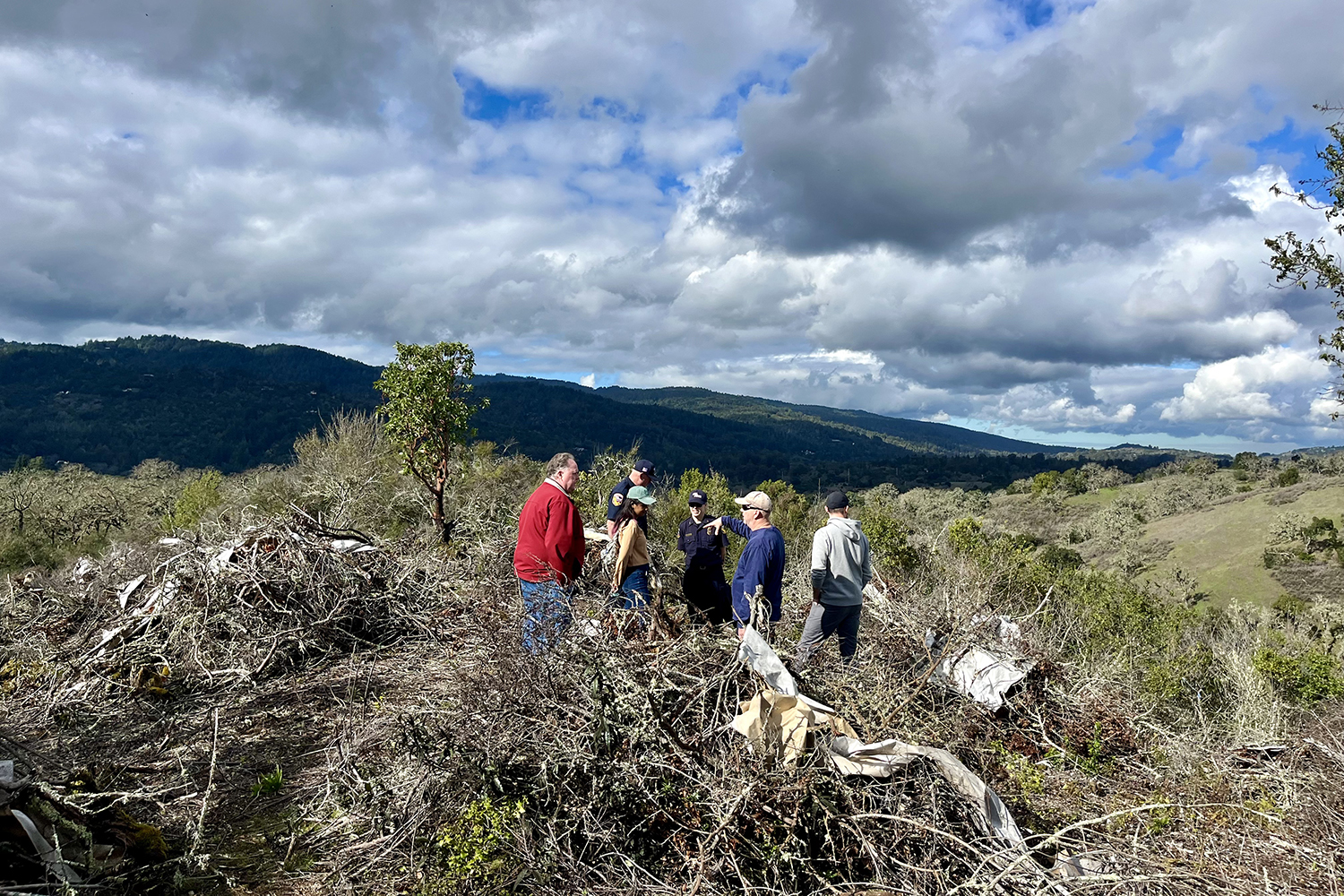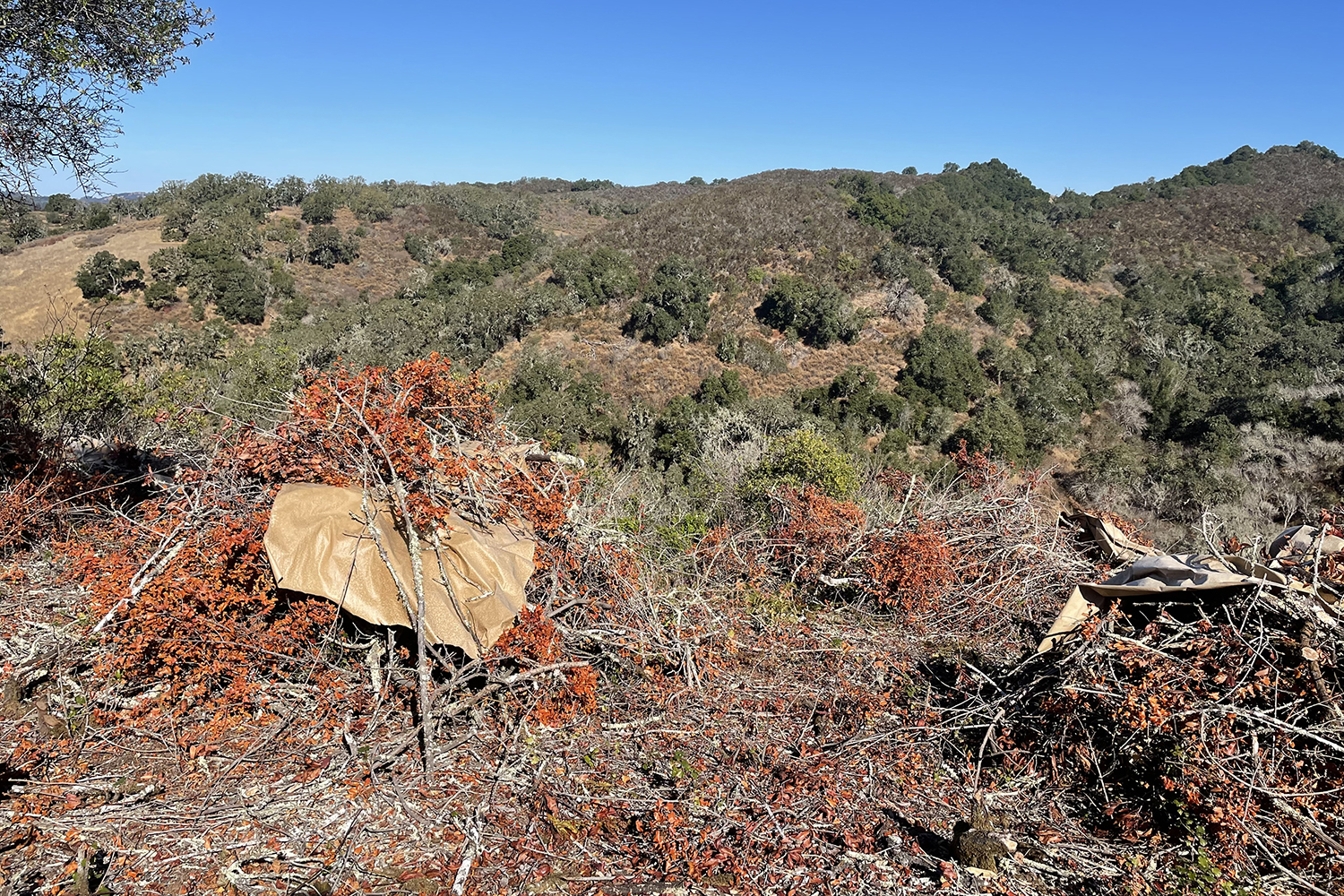Pile burning will reintroduce good fire to Jasper Ridge Biological Preserve
A fuel reduction project to improve wildfire resilience in and around the preserve is a living lab for wildfire management research and an opportunity to model cultural burning for Indigenous communities.

Staff of Jasper Ridge Biological Preserve – ’Ootchamin ’Ooyakma walk the pile-burning area with local fire agency representatives. (Image credit: Sheena Sidhu, Jasper Ridge Biological Preserve)
A fuel reduction project at Stanford’s Jasper Ridge Biological Preserve – ’Ootchamin ’Ooyakma (JRBP’O’O) will come to completion next month through a reintroduction of prescribed fire to the land.
As part of the university’s long-term process to reduce the impact and threat of wildfire to the community, JRPB’O’O crews removed dead and dying vegetation and thinned healthy vegetation throughout the project area in October 2023. Much of the vegetation cut by crews was chipped in place. However, in areas where chipper equipment could not reach, piles of woody material were created and will be burned to complete the fuel reduction project.
Pile burning is an effective technique for reducing the amount of vegetation, or fuel load, on the landscape, conducted under a carefully designed environmental prescription that factors in temperature, relative humidity, wind, and smoke dispersion, among other variables.

Piles of cut vegetation are ready to be safely burned. (Image credit: Sheena Sidhu, Jasper Ridge Biological Preserve)
The pile burning, tentatively scheduled for the week of March 4, will be conducted safely and effectively, in coordination with local fire agencies and overseen by a vendor that specializes and is certified in these types of pile burns across California.
In addition to the primary goal of improving wildfire resilience in and around the preserve, this project also offers a unique living lab for wildfire management research and an opportunity to model cultural burning for Indigenous communities.
Researchers hope that exploring the methods of fuels reduction and vegetation management used in these areas will contribute to a better understanding of effective wildfire management, both at the preserve and regionally.
Learn more about this phase of wildfire management and research at Jasper Ridge Biological Preserve – ’Ootchamin ’Ooyakma.